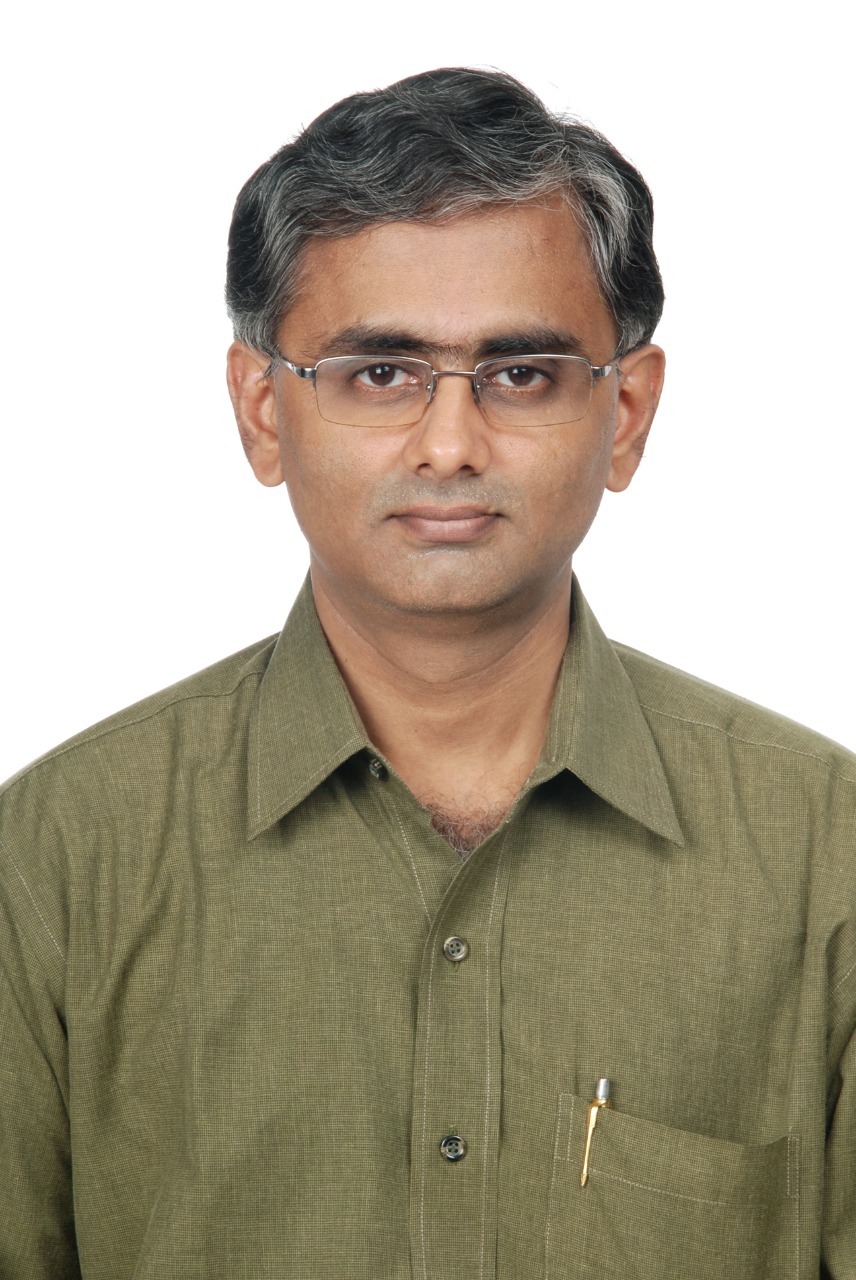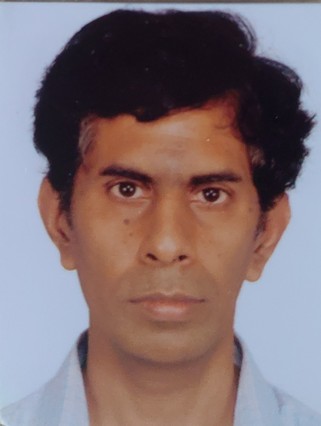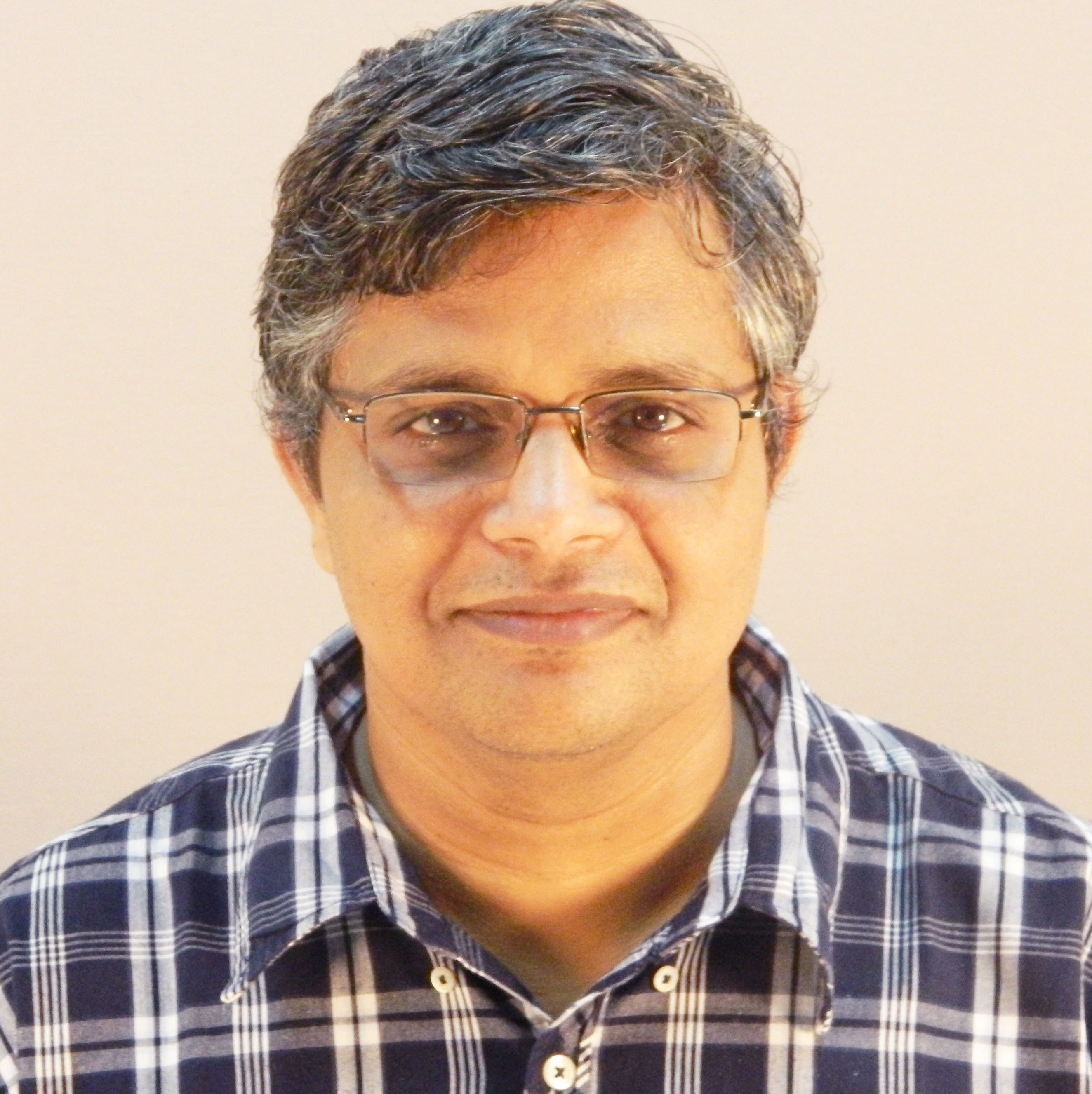Project
The proposal envisages work in two phases. The first is to start with a small trial implementation (Exploratory Microgrid) with technologies that are currently at an advanced stage of development at IITM, and work on an energy management grid operation strategy. This is expected to lead to a demonstrable microgrid system operation at the end of the first phase. This would also help characterize the various sources for use in a microgrid. In the second phase, the proposal is to work on a sample implementation as a full fledged laboratory at the scale of about 100 kWh while working on taking it to field stages. It is proposed to explore additional funding options and approaches for field implementations before the end of the second phase
The technologies proposed to be integrated into a microgrid at a laboratory scale (second phase) are as below.
- Wind Turbine of 5 kW rating for cut-in wind speeds of 2.5 - 2.75 m/s and rated power at about 8 - 9 m/s. Hydrokinetic turbine of 5 kW rating for water flow speed of 2 m/s
- Ultra-low head turbine of 5 kW rating at a head of 3-4 m and flow rates of 250 -300 lps
- Vanadium Redox Flow batteries of 100 kWh capacity; India Centric solutions: flow battery with alternatives to vanadium chemistry; and zinc-ion battery
- 30 kWh Phase Change Material based thermal storage ( < 100 deg C)
- 20 kW PV+Thermal modules, cogeneration of thermal energy together with PV panels
- Process heat based generation of 20 kW
- Waste to Energy generation, 20-100 kW capacity
- Micro gas turbine, 100 kW capacity
- Power Electronics modules for integration into an AC microgrid and power flow sharing and control.
- Load / Source management strategies and control center for microgrid management
The confidence gained in the laboratory management of these would be used to take them to a field deployment stage. While in the laboratory, the system is intended to be demonstrated as one comprising sources of comparable capacity, the sizing during field implementation will depend on the economics of the technology options and local availability.
Phase 1:
This stage will focus on
a) R & D aspects: Paper design and development of the following and identifying characteristics
- wind turbine for 5 kW (at 8 - 9 m/s) with integrated generator development
- Hydrokinetic turbine 5 kW with integrated generator development
- Ultralow head axial flow hydroturbine 5 kW with integrated generator development
- Flow Batteries for 100 kWh capacity, and reduction of Vanadium content by alternative chemistry
- Power Electronics Modules
- Load / Source Management strategies by simulation studies
- PVT system for 20kWe with 30kWh of PCM thermal energy storage
b) Development of an Exploratory microgrid with technologies readily available:
At present faculty are already working on the following
- Energy generation from municipal solid waste to heat
- Flow batteries
- Waste Heat and Solar Heat to electricity generation using steam and organic fluids
- Microgas turbine using lean direct injection combustor
- Islanded operation of Solar PV
- Ultralow head turbine design
It is proposed to make use of these developments to form a low power (at a few kW level) exploratory microgrid in this phase. This will enable characterisation of various source technologies and options for power / energy management, and serve to motivate field implementation funding.
c) Field Studies:
Identification of sites of interest that will enable a deployment of microgrids, installation of measuring equipment to get load patterns, investigation into available local sources of energy and site visits in connection with this activity. The impact on economies at the deployment sites will also be investigated. It is proposed to investigate rural, industrial and urban sites for this purpose. The studies are also expected to feed into load forecasting models for use in the energy management system. In parallel with these studies, possible implementation sites would also be identified.
d) Planning a Laboratory scale implementation:
The preliminary work on the required laboratory setup will be carried out in the first phase. Planning the lab area, equipment needs for microgrid demonstration, technologies to be purchased or manufacturing plans for inhouse developments will be identified. Wind turbine and hydrokinetic turbine are technologies which will not be feasible to deploy in the lab - for these suitable motor generator sets would be planned that will be programmed to mimic the characteristics of these sources and their loading effects. Based on the work done on energy management, suitable instrumentation, control structure would be planned.
e) Modelling of Microgrids:
The studies will also pave the way for generating models of microgrids, as a valuable database for further studies including design of a schema for power generation and consumption mix, with the right amount of prosumers, producers, consumers with an optimum amount of energy storage.
f) Second phase:
The second phase of activities will add further experimental knowledge to this database and valuable field experience that will only grow richer with time.
At the end of this stage it is expected to be able to demonstrate an exploratory microgrid behaviour physically and as a computer simulation to validate the ideas proposed. The Industrial Energy Assessment Center (IEAC) and Center for Technology and Policy (CTaP) have already been interacting with many industries for energy studies. This activity will be leveraged further to study the possibilities of industrial microgrids. Apart from this, faculty in this group have also been working with NGOs for village economies, which will be leveraged for the purpose of field studies.
Phase 2
This stage focuses on implementation of the technologies planned in the first stage.
a) Laboratory implementation:
This will commence with the manufacture / procurement of components designed and identified in the first phase. The establishment of the laboratory will require some space. This can be implemented in Thaiyur campus where this integrated setup could be established as a demo site. This duration is expected to take 18 months. The equipment designed during phase 1 will be manufactured during this phase and the system would be built and commissioned. Sponsor invitations: By the end of Phase 1, the lab implementation is expected to be ready. Suitable funding would be explored for the field implementation via the CSR route. This is expected to be further bolstered by the laboratory development in Phase 2.
b) Field implementation:
This is expected to towards the second of the third year (first year of Phase 2). This would actually be challenging since multiple sites are planned.
c) Regulations and Policies:
The actual operation of the exploratory microgrid and the studies done in the field study of Phase 1 will help formulate ideas to feed to regulations and policies that would be useful for microgrids in India.
Technology Deliverables
Flow batteries:
The alternative flow battery technologies use the resources available in India, therefore when the volume of production goes up in MW scale or more, the expected cost will be much lower than the current Li-ion technology.
Low cut-in Wind Turbine:
The proposed system aims to design and develop small wind turbines with an improved power curve for low wind regions of India. It is expected that the approach can be scaled up for larger wind turbines also.
Vertical axis Hydrokinetic Turbine with less torque ripple and improved starting torque:
The research work envisaged will design turbines to mitigate the drawbacks of poor starting torque and high torque ripple through design changes of the blade and use of duct-augmented designs as well as hybrid turbine designs. Further, research scope exists for arriving at optimum spacing for turbines in an array as most of the arrays are designed for horizontal axis big wind turbines in wind farms.
Ultra-low head Axial-flow Turbines:
Ultra-low head, small sized axial flow turbines must ensure improved draft tube performance. This will be attempted here through appropriate guide blade settings and design modification of conical draft tube. If successful, this will make the turbine-generator assembly compact, water-proof and cheaper.
Waste-to-Energy via Combustion:
This proposal will employ a novel rotary combustion technique developed at NCCRD, IIT Madras, to burn MSW containing upto 40% of moisture with efficient recovery of ash and treatment of exhaust flue gases. The system delivers steam as the major product, which will be coupled with the low power expander developed to generate power.
Low power expander:
Power generation from waste heat and other distributed energy sources require small scale power blocks, typically in the output range from 5 to 100 kWe. In the first phase of the project, a 5 kWe expander will be coupled with the MSW combustor for the exploratory microgrid formation.
Power Electronics for Microgrids:
Power Electronics forms the interface between the different sources and the grid. Hardware that can be universal in nature and can handle differing types of input sources, decentralized controls for inverters and communication methods for centralized monitoring will be the focus of the development in this technology domain.
Microgas Turbine:
In this proposal, the Lean Direct Injection (LDI) burner developed at NCCRD, IIT Madras, will be utilized to convert the liquid bio-crudes derived from MSW and agro wastes via hydrothermal liquefaction to power. In the first phase, a 20 kW microgas turbine will be demonstrated and the output characteristics will be tested with the microgrid. In the second phase, a 100 kW microgas turbine will be developed for application at scale.
Solid State Transformer:
In the second phase of this proposal, a novel power topology will be studied which will be economical and also very efficient. Finally, a new way of microgrid interaction will be established which will have a strong grid stabilization capability.
Energy Management and Control:
Energy Management for microgrids is the need of the hour for the operation and sustenance of the distributed renewable energy microgrids. Localized energy resources and distributed energy management leading to an autonomous system will be the novelty. Distributed digital control among microgrids paves way for novel technologies for easier implementation and deployment
Current status
Ongoing Work
- Design of Steam generator System with a novel steam expander
- Design of MSW combustor
- Design of Microturbine system and associated Power Electronics for grid integration
- Characterization of Redox flow batteries
- Design of Inverters for Solar PV for microgrids and islanded operation algorithms

Variation of battery efficiency during discharging over a 7-day period

Variation of battery efficiency during charging over a 7-day period

7-day profiles of solar PV panel output and aggregated residential load

Measured flow battery response characteristics with power and energy scale factors of 1/2 each

Battery testing Facility
Pilot Scale MSW Combustion Setup at IITM

Process Development of Hydrothermal Liquefaction of Wastes to Bio-crude


Anisotropic multi-celled closed cross-section of a typical wind-turbine rotor blade.

Rotor blade with spanwise varying twist

Composite blades with optimized chord and twist distribution along span and twist-bending coupling to enhance blade performance and energy capture.

Fluid-structure coupled analysis for blade deformations
Collaborations
International education programs
- Roundtable Workshops at the end of First Year.
- Microgrid Winter School at the end of Phase 1
- International Conference at the end of Phase 1
Societal impact
Societal Impact
Energy is one of the key discussions of today and is likely to be so in the coming years. The proposed CoE addresses important aspects related to
- Energy generation and management in rural and remote communities. This has multiple benefits - it fits in with the Government’s need of electrification, it meets sustainability needs by using possible local sources, and would involve community participation.
- In urban zones, waste management is a major aspect. It would be most beneficial if this could be converted to electricity / steam as the need many be. This proposal addressed this need and hence this CoE could be very relevant even in the urban context.
- Microgids add to resilience in times of disasters. This CoE focuses on the integration of a wide variety of technologies and hence would be very relevant in urban and rural areas for the purpose of resilience.
- Industrial settings would also benefit from the work proposed since waste heat, a common commodity in process industries is sought to be harnessed. While it may not be possible to support the entire industrial operation using a microgrid, these can certainly have an impact on the energy bill.
- Microgrids in rural areas can impact local economies and prosperous villagers can add sources when it becomes possible for them to do so incrementally. This can benefit and boost village economies.
Thus the work proposed under this center would benefit many constituencies of the country. The target in the first two years is the development of an exploratory microgrid with technologies that are currently under development or largely mature so that visibility and validation is expected to be ready by Phase 1. It is already a part of the proposal to explore CSR funding to enable field implementations.
Technical/ Scientific Progress
New work done in the project
Phase 1 of the project aims at the establishment of a microgrid consisting of Solar PV, Gas Turbine, Flow Battery, Municipal Waste and Steam Turbine as sources. Loads are proposed to be distributed at various locations.
Towards this end, Solar PV inverters capable to operating in the grid tie mode as well as islanded microgrid operation have been designed and component/PCB testing has been completed. This inverter uses SiC based power devices for the MPPT tracker as well as the main inverter. Work on assembly of the total system and further system testing is going on.
Power electronics modules are also required for interfacing the other systems to the grid. The MSW to steam system has been designed and parts are being ordered. The steam from the system will be fed through an expander which has been designed to be used as a means to tap excess power in industrial in-process steam. This expander provides a mechanical shaft output, and will be connected to an induction generator. The induction generator will be interfaced to the grid through a a series of back-to-back connected inverters, one on the machine side and another on the grid side. While the control algorithms have been tried and developed in simulation, the system has been sized for the capacity of the expander that has been designed, and purchase orders have been placed for the machine side system. The sizing for the remaining elements of the system for grid interfacing and procurement is in process.
Power electronics modules for the flow battery system are under design stage. The dc/dc converter required for stepping up the voltage level from the battery stack is done for a power level of about 1 kW and it is proposed to parallel stages to handle the rated power output from the stack. An inverter suitable for connecting this scaled out voltage output to the grid has been designed and tested up to full power. The battery stack and electrolyte subsystems have been designed and are operational. Various characterization tests are being carried out in order to understand the performance of the battery.
The gas turbine based power development system assembly is being done. The mechanical system is expected to be tested in the first quarter of 2022. The power electronics system configuration required for interfacing this to the grid and the operational aspects have been understood. The design of grid connecting power electronics modules for this system is to be started. However, since functional blocks required for this system are already being developed for the flow battery system, it is only required to size the components for this rating.
There has been considerable R&D efforts undertaken with respect to inverter operation and control on the grid. Approaches for islanding detection during fault conditions in the grid, investigation into the behaviour of load sharing among islanded inverters based on earlier proposed algorithms, development of active snubbers for phase shift bridge converters with voltage adaptive capability, investigation into phase locked loops for harmonic compatibility, operation of inverters in islanded systems containing nonlinear loads are some of the activities that are currently being researched.
An axial-flow hydraulic turbine based on in-house design is fabricated and tested. This hydraulic turbine is meant to work for run-of-the-river type power extraction in sites offering ultra-low heads. In order to make turbine design efficient over a range of flowrates and to make the maintenance cost less, this turbine does not have any guide vane. Thus, though it sacrifices the peak efficiency achieved in fixed guide vane turbines, it compensates by having a flatter efficiency variation.
Infrastructure developments
The project also proposes to develop wind turbines with low cut-in speeds and hydro turbines for low head systems. To help in the development of these systems, a wind tunnel faciltity is has been planned and procurement has commenced. Suitable software for analysis, and design of such systems has been purchased and more modules are being planned. The design studies for these systems will be undertaken in this phase, while the manufacture and assembly are to take place in the next phase.
A new test facility is developed to test axial flow hydraulic turbine testing, making design turnaround quicker in the future. A photograph of the test section of the set-up with the mounting of turbines is shown.
The microgrid establishment is a key task. Towards this a system architecture has been proposed and is currently under material planning stage. It is also proposed to establish metering infrastructure along with power infrastructure. Cost estimates have been prepared for the power stage and metering estimates are now being looked into.
Procurement of components for the solar thermal system has also been initiated.
Output
- Deepthi Sivadas, Vijaymahantesh V Surkod, Amrutha Haridas, Arun Chithrabhanu, and Krishna Vasudevan, “Adaptive Active Islanding Detection Strategy Enhanced with Fault Ride-Through Capability for Grid-Tied Inverters”, presented in IEEE PESGRE2022, Trivandrum, Kerala, India, January 2022
- Nagesha C, N. Lakshminarasamma ,“Synchronous Rectification for LCLC resonant converter” is presented in IEEE PESGRE2022 Trivandrum, Kerala, India, January 2022
- Patent granted on load sharing of inverters in islanded mode of operation.





Mobility
Visits planned for PI, co-PIs, international collaborators and students (both inbound and outbound)
Relationship
Industrial Engagement
M/s Maschinenfabrik Reinhausen, Germany, is a collaborator in the infrastructure to be established for the microgrid and some of the research that is being pursued. They will be contributing an on-load tap changer which they have designed for use with distribution transformers, which will be used in the microgrid. It is proposed to study the impact of voltage regulation equipment on the operation of microgrids with the help of this intervention.
M/s Cygni Energy from India is another collaborator in the establishment of the microgrid and in some of the research activity that is being pursued.
The center took part in the Energy Summit, where the plans of activity were presented. This event was part of the Energy Consortium now inaugurated combining all pCoEs in the energy domain. During the summit, industries have expressed interest in following the activity of this center. Focussed discussions are planned with a few who have taken part in the summit.
Other expressions of interest in some of the technologies under development under the center have been received.
University Engagement
Discussions are on with TU Berlin on collaboration with the center for research work of their PhD students in the energy group. Tentative topics have been proposed and are under discussion.
Prof. Sanjib Panda from NUS on delivered a talk on Microgrid activities in their group.






